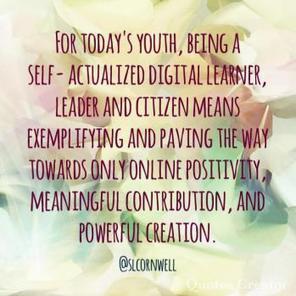""Digital skills are vital for students today because this is what their jobs will look like in the future," says veteran middle school teacher Kay Vanzant-Bradney of Nelson Academy in Long Beach, California. "And given our circumstances right now, with the pandemic and remote learning, if you don't have digital skills, you literally can't connect with your education."
This is why her students use Google's Applied Digital Skills, a free, video-based, online digital literacy curriculum. Through flexible project-based learning, each lesson teaches foundational digital and technological skills. Students learn to solve real-world problems, like how to craft resumes, design infographics and create interactive presentations from scratch."
Research and publish the best content.
Get Started for FREE
Sign up with Facebook Sign up with X
I don't have a Facebook or a X account
Already have an account: Login
News, reviews, resources for AI, iTech, MakerEd, Coding and more ....
Curated by
John Evans
 Your new post is loading... Your new post is loading...
 Your new post is loading... Your new post is loading...
|
|












